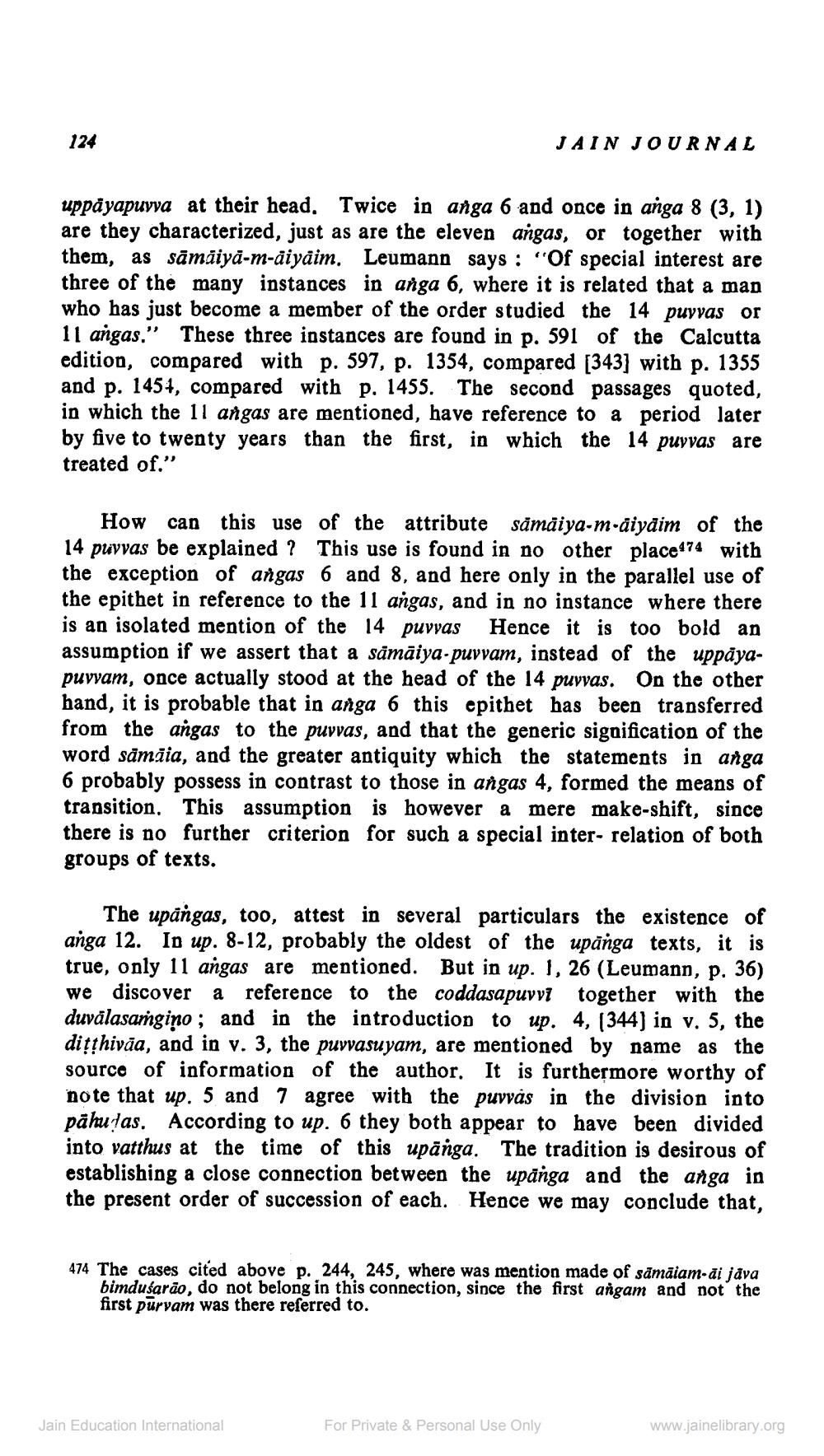________________
124
uppayapuvva at their head. Twice in anga 6 and once in anga 8 (3, 1) are they characterized, just as are the eleven angas, or together with them, as sāmāiyā-m-āiyāim. Leumann says: "Of special interest are three of the many instances in anga 6, where it is related that a man who has just become a member of the order studied the 14 puvvas or 11 angas." These three instances are found in p. 591 of the Calcutta edition, compared with p. 597, p. 1354, compared [343] with p. 1355 and p. 1454, compared with p. 1455. The second passages quoted, in which the 11 angas are mentioned, have reference to a period later by five to twenty years than the first, in which the 14 puvvas are treated of."
JAIN JOURNAL
How can this use of the attribute sämäiya-m-äiyāim of the 14 puvvas be explained? This use is found in no other place474 with the exception of angas 6 and 8, and here only in the parallel use of the epithet in reference to the 11 angas, and in no instance where there is an isolated mention of the 14 puvvas Hence it is too bold an assumption if we assert that a sāmāiya-puvvam, instead of the uppāyapuvvam, once actually stood at the head of the 14 puvvas. On the other hand, it is probable that in anga 6 this epithet has been transferred from the angas to the puvvas, and that the generic signification of the word sămăia, and the greater antiquity which the statements in anga 6 probably possess in contrast to those in angas 4, formed the means of transition. This assumption is however a mere make-shift, since there is no further criterion for such a special inter- relation of both groups of texts.
The upangas, too, attest in several particulars the existence of anga 12. In up. 8-12, probably the oldest of the upanga texts, it is true, only 11 angas are mentioned. But in up. 1, 26 (Leumann, p. 36) we discover a reference to the coddasapuvvi together with the duvalasaṁgino; and in the introduction to up. 4, [344] in v. 5, the diṭṭhivaa, and in v. 3, the puvvasuyam, are mentioned by name as the source of information of the author. It is furthermore worthy of note that up. 5 and 7 agree with the puvvas in the division into pāhuḍas. According to up. 6 they both appear to have been divided into vatthus at the time of this upanga. The tradition is desirous of establishing a close connection between the upanga and the anga in the present order of succession of each. Hence we may conclude that,
474 The cases cited above p. 244, 245, where was mention made of sāmāiam-āi jāva bimduśarão, do not belong in this connection, since the first angam and not the first purvam was there referred to.
Jain Education International
For Private & Personal Use Only
www.jainelibrary.org




